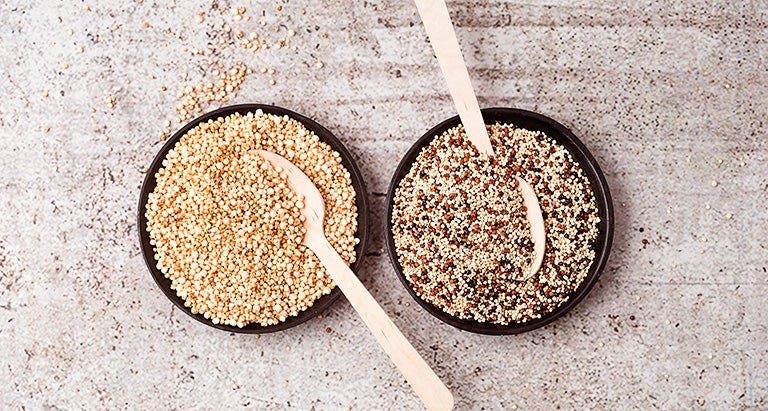Most Valuable Ingredient: Quinoa
Quinoa is high in protein and nutrients, tastes great and is one of the fastest whole grains you can make.
By Bruce Weinstein and Mark Scarbrough
Published March 7, 2017


A limited budget doesn't have to mean limited flavor. Our "Most Valuable Ingredient" series highlights those powerhouse products that are versatile, healthy, tasty and cheap, giving you the best bang for your buck.
Quinoa has been called the “miracle grain” because it achieves the trifecta of culinary perfection: It’s nutritious, satisfying and easy to prepare. Best of all, you can make a bowl of cooked quinoa and store it in the fridge all week, a boon to many meals to come. A staple in South America for centuries, it should become one in your kitchen, too.
The Stats
- Quinoa is an ancient food from high in the Andes, grown by the Incas long before the Spanish arrived on the scene. Quinoa thrives in frigid, desert-like, high-altitude environments — places that would be the death of almost all other grains.
- Although called a grain, quinoa is actually the seed of specific plants in the goosefoot family — a group of plants that includes spinach and chard.
- Quinoa has the highest protein content of any grain. Ounce per ounce, it has more calcium than milk. Plus, quinoa is a great source of manganese, magnesium, iron, phosphorus and zinc. All that, and quinoa is gluten-free, too!
- Quinoa cooks really fast, in just minutes — a great whole grain for busy weeknights.
- You’ll most often find two types of quinoa at the store: red or white (sometimes also called “yellow” quinoa).
- Black quinoa is a rarity, usually found only in health-food stores.
- Quinoa can also be ground into a flour for use in reduced-gluten or even gluten-free baking and cooking.
The Score
- Quinoa is fairly mild-tasting with a slight nuttiness, maybe even a little grassy like wild rice.
- In truth, quinoa is all about the texture: great crunch and pop in every bite. Consider it the caviar of whole grains!
- Individual quinoa grains are tiny, smaller than wheat berries, barley, or even millet grains. When cooked, the quinoa germ unfurls to form a small, translucent halo around the grain.
- Because quinoa is so high in polyunsaturated fats, it can go rancid rather quickly and should be stored in the fridge for up to 4 months. If possible, buy it from a health-food store or gourmet market where there’s a high turnover of product on the shelves. Quinoa flour should be stored in the freezer.
- Although quinoa flour is by nature gluten-free, it may be processed in a facility that also processes wheat and other gluten-laden grains. If important, check the manufacturer's website to make sure yours is made in a gluten-free facility.
- As they develop, quinoa seeds coat themselves with a natural insect repellent called saponin — which has a bitter, soapy taste. Most quinoa sold in the United States is prewashed to remove the saponin.
- If your pot of quinoa has a soapy film on top, the grains were not properly prewashed. Drain repeatedly and wash these seeds thoroughly before continuing to cook.
- That said, all quinoa, even the prewashed kind, should be rinsed in a fine-mesh colander before cooking to remove any saponin dust that may still adhere to the seeds.
In Play
- Toasting the raw seeds in a dry skillet over medium heat for a minute or two will enhance their nutty flavor. But be careful: Quinoa is one of the few whole grains that will pop over high heat!
- Substitute a small mound of cooked quinoa for the starch at any meal — in place of rice, pasta, couscous or potatoes.
- To cook quinoa, mix 2 parts water to 1 part raw quinoa in a saucepan, bring to a boil over high heat, then reduce the heat to low and simmer, covered, until the water is absorbed and the quinoa is tender, 10 to 12 minutes. Fluff with a fork.
